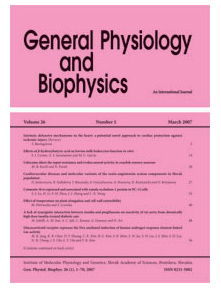General Physiology and Biophysics Vol.37, No.1, p.93–99, 2018
|
| Title: Stability studies of endocrine disrupting tributyltin and triphenyltin compounds in an artificial sea water model |
| Author: Ladislav Novotny, Leyla Sharaf, Mohammed E. Abdel-Hamid, Julius Brtko |
|
Abstract: Triorganotins belong to toxic components present predominantly in antifouling paints for marine vessels. Tributyltin/triphenyltin at pico- or nanomolar concentrations in sea water are known to induce an irreversible sexual abnormality in females of over 190 marine species, an “imposex” phenomenon – the superimposition of male genitalia on a female. Moreover, trialkyltins and triaryltins function as potent nuclear retinoid X receptors (RXR) agonists. In mammals, triorganotin compounds induce immunosuppressive, metabolic, reproductive or developmental effects. Toxic effects of triorganotins warrant the need for monitoring of their long-lasting presence in the environment. This study brings novel data on the stability of two triorganotin compounds in artificial sea water model obtained by applying ultra-pressure liquid chromatography (UPLC) and gas chromatography-mass spectrometry (GC-MS) methods. Stability of tributyltin and triphenyltin chlorides was studied for 180 days and the degradation kinetic parameters were obtained. Tributyltin chloride was the less stable with the degradation kinetic parameters Kdeg = 0.00014 day–1 and t1/2 = 4950 days (13.6 years). Kdeg of the more stable triphenyltin chloride was determined to be Kdeg = 0.00006 day–1 with t1/2 = 11550 days (31.6 years). Since similar stability data of triorganotin compounds were not published previously, we report high stability for both tested compounds, which indicates a significant environmental problem when these substances enter sea water and later coastal sediments.
|
|
| Keywords: Triorganotins — Sea water stability — UPLC — GC-MS |
|
|
Published online: 22-Jan-2018
|
| Year: 2018, Volume: 37, Issue: 1 |
Page From: 93, Page To: 99 |
doi:10.4149/gpb_2017051
|
|
 download file download file |
|
|
|
|
 download file
download file
